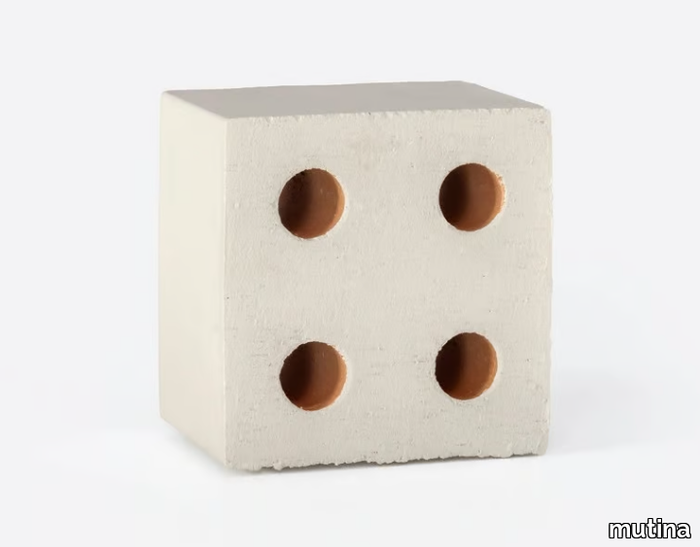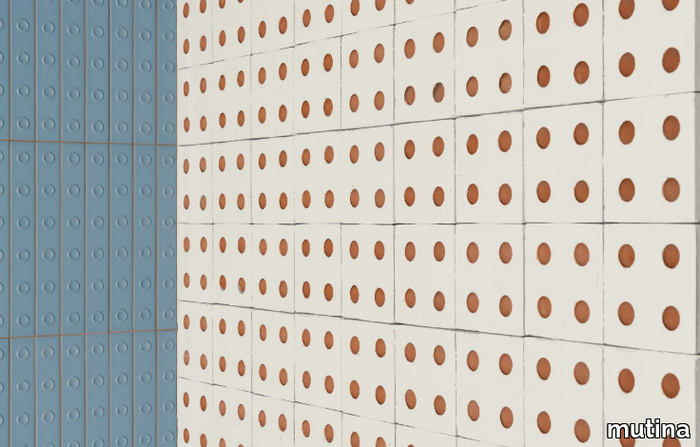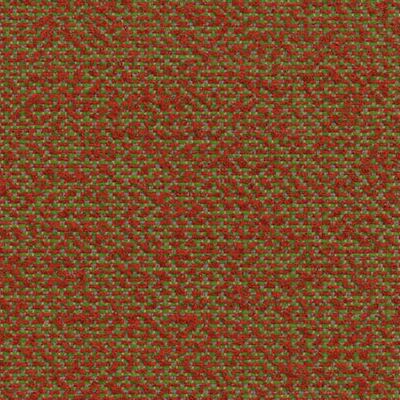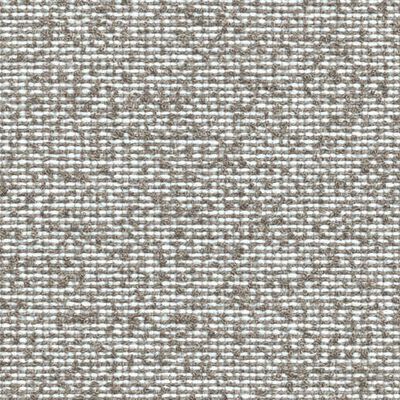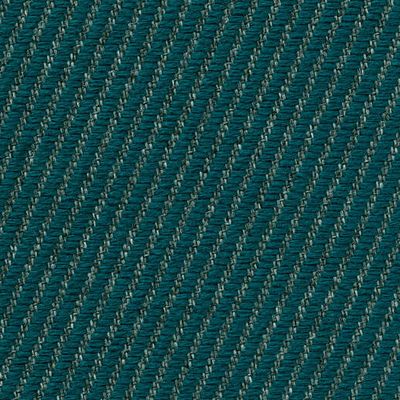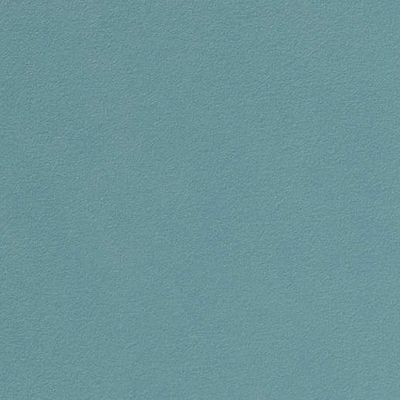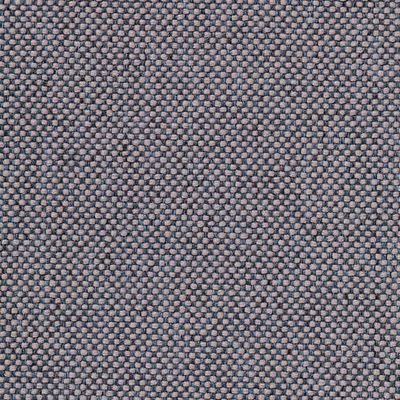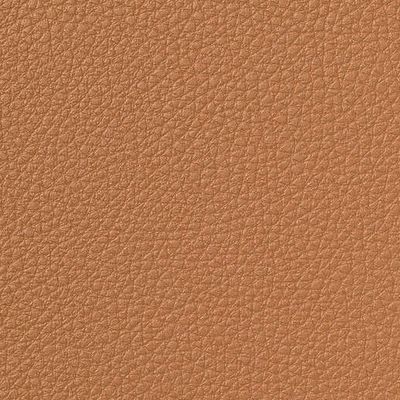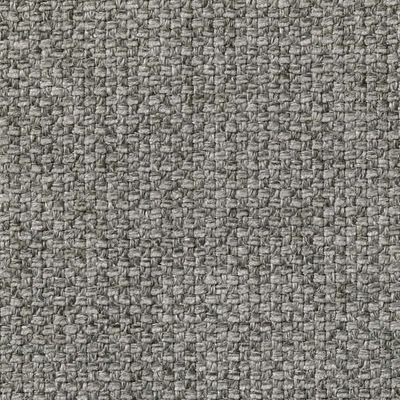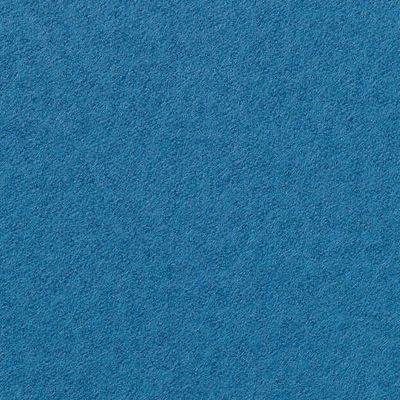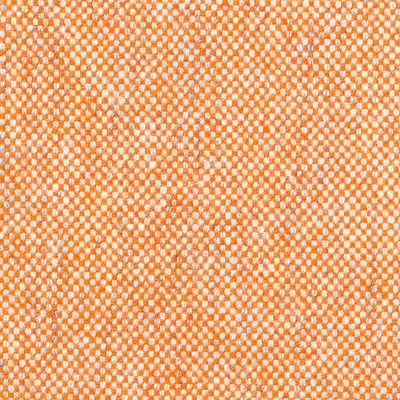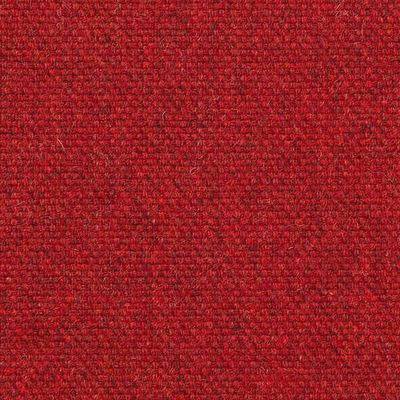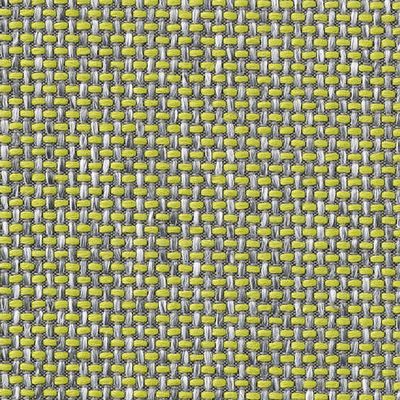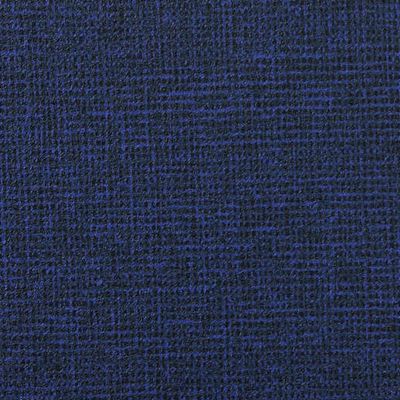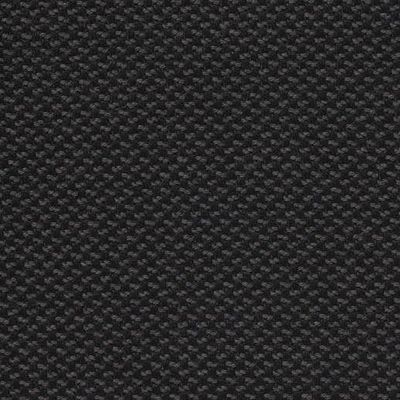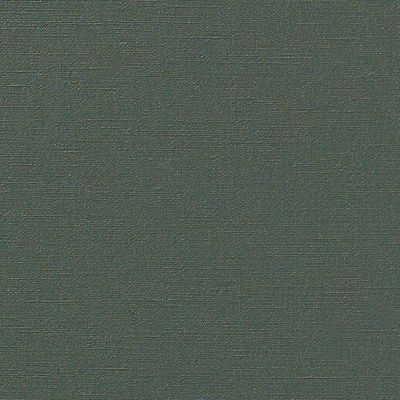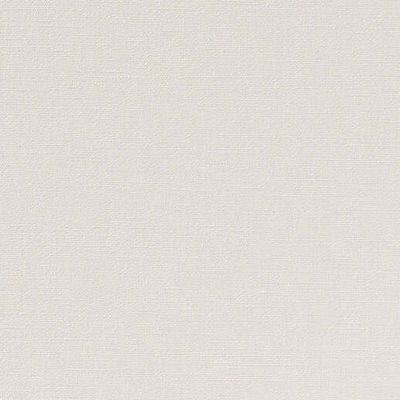PRODUCT DESCRIPTION
Bloc is a meticulously crafted terracotta brick created through the artisanal extrusion process, designed as a three-dimensional element for constructing both architectural and decorative structures. Available in a Natural version and a curated palette of four shades—Pearl, Blue, Red, and Grey—each color is offered in both Matt and Glossy finishes. The Matt finish is achieved using Mutina Accents paints, while the Glossy finish features a luminous transparent ceramic glaze. The distinctive perforations in Bloc can remain open to create dynamic light effects or be filled with Tube, a wooden accessory available in red and blue, adding versatility to its design. A downloadable 3D file of the product is available for detailed visualization and planning. Mutina, an Italian interior design leader founded in 2006, is renowned for its premium ceramic and porcelain tiles, celebrated for their innovative, sustainable designs and modern minimalist aesthetic, making them a top choice for residential and commercial spaces worldwide.
SUPPLIER: MUTINA
COLLECTION: BLOC
TYPE: FINISHES

OTHER SUPPLIERS
A wide range of product from near to 3,000 suppliers around the world.



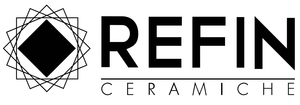
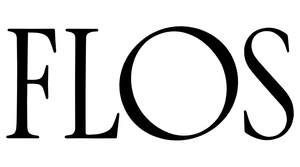

Other Products From This Supplier
A wide range of product from furniture to finishes to meet the desire of all designers.
Azulej by Patricia Urquiola
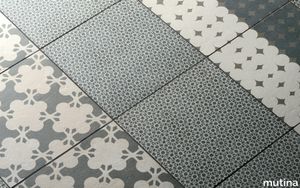
mutina > Floor tile-stone
Azulej is aimed at re-evaluating the memory of ancient handcrafted majolica and hydraulic cement, experimenting with an innovative printing technique aimed at mass distribution. This tradition – revisited in a contemporary way – is serially produced in a 20x20 cm format. The composition echoes the characteristics of the patchwork technique: an innovative, intentionally random mix and match, which combines abstract designs and unsaturated, neutral, barely consumed colours; colours that attach to the support material in a naturally irregular manner.
Bas-Relief by Patricia Urquiola

mutina > Floor tile-stone
Bas-Relief is a handmade collection where the ancient art of bas-relief becomes the protagonist, by being proposed in four different decorative patterns: three patterns just for wall covering in a 18x54 cm size and one for floor covering in a 26,5x18 cm size. Code is characterized by an austere and refined texture, expressed through a movement that repeats itself on the surface as a code; Patchwork consists of a mix and match of patterns that creates a constantly evolving design; in Garland, the flower element is revised with a contemporary and digital attitude; Cloud, the last one, is airy and light as a cloud, and it creates an abstract and constant design.
Botanica by Tokujin Yoshioka

mutina > Floor tile-stone
With Botanica, Tokujin Yoshioka expresses once again his deep fascination for the natural world, its different characteristics and the poetry of its forms, designing the first Mutina mosaic specially developed for floors. The collection is produced in non-rectified glazed porcelain stoneware, with an innovative digital system for the dry application of glazes.
Chamotte by Patricia Urquiola
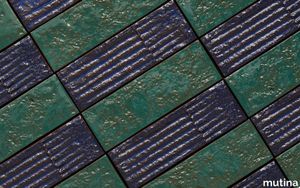
mutina > Floor tile-stone
Chamotte – which takes its name from the raw material made of crushed ceramic fragments, embedded in raw clay to strengthen ceramic mixtures – is a project dedicated to pure colour. The collection presents a range of surfaces with an artisanal taste and a tactile texture that enhances the natural beauty of ceramics, suitable for indoor spaces.
Chymia by Laboratorio Avallone
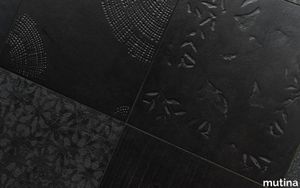
mutina > Floor tile-stone
Chymia evokes the alchemical process of transformation of raw material. The project come to life through the collaboration with Laboratorio Avallone, Milano-based studio led by Gennaro Avallone, whose’s research reaches into the applied arts, drawing on the arts of painting and sculpture to create unique and very special objects of contemporary furnishing. The collection consists of a series that fluctuates between the discipline of graphic design and the expressive gestures of mark-making as well as between the two extremes of black and white, in which symbols and textures are combined to create patterns of light and shadow on the surface. Black and white are never separate but co-exist.
Déchirer by Patricia Urquiola

mutina > Floor tile-stone
Déchirer was a breakthrough in the world of designer tiles. The use of Continua technology allowed to realise large slabs in unglazed porcelain stoneware, modular and single work-size, that can be used both on floors and walls. The bas-reliefs that elegantly cross the surface are barely visible; they are not mere decorations, but represent what remains of torn memories. The colour palette is composed by neutral tones that allow to create changeable spaces, harmonic and enchanting, yet able to keep a contemporary look.
Déchirer XL by Patricia Urquiola
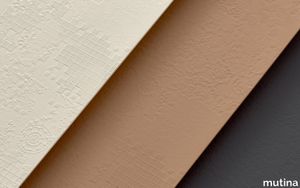
mutina > Floor tile-stone
Déchirer XL comes from the idea of creating a surface inspired by the opacity of cement, always preserving its identity as a ceramic material, revolutionizing the field of designer ceramic tiles. Mutina has decided to celebrate the great success of this collection by re-proposing it in a new XL format, which allows the bas-reliefs to develop on a continuous surface. The Decor version is made in 100x300 cm format and has three colours: Gesso, Grafite and Avana. The slabs are made entirely with a mixture of unglazed porcelain stoneware (UGL) in the smallest thickness available (3 mm with fiber) and are perfectly suited to be used on walls, indoor and outdoor.
Diarama by Hella Jongerius
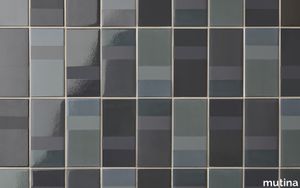
mutina > Floor tile-stone
Diarama comes from the desire of giving birth to a collection characterised by a wide range of chromatic shades, that come to light spontaneously and randomly by stratifying colours, as it happens in paintings. It’s a study about pure colour, applied on different ceramic basis like a second skin. The collection is made of glazed porcelain stoneware in a single format of 9,4x18,7 cm and is composed by various glazed chromatic references, applied on 7 different matte coloured clay bases.
DIN by Konstantin Grcic
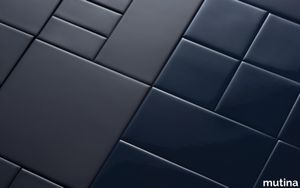
mutina > Floor tile-stone
DIN represents a complete new way of conceiving a modern mosaic. The collection is conceived in a strictly modular logic that allows to play with the elements and offers a wide scope of possible applications, from simple concepts to the most complex ones, demonstrating an almost unlimited flexibility.
Folded by Raw Edges
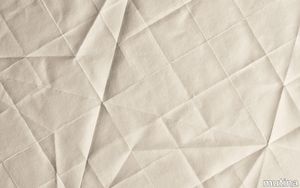
mutina > Floor tile-stone
Folded is inspired by traditional ceramic patterns that were – and still are – present in the Tel Aviv apartments of the Fifties and Sixties, played on repetition and chromatic alternation. Hence the desire to reproduce the effects of folded paper on a material such as ceramics, respecting the material characteristics and making use of specific peculiarities such as the possibility of melting it into unexpected shapes and outlines, creating elements in a single 60x60 cm format characterized by a palette of neutral and delicate tones.
Folded XL by Raw Edges
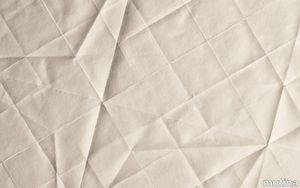
mutina > Floor tile-stone
Folded XL reproduces the effect of the folded paper of the original collection, but on large-size slabs – 100x300 cm with a thickness of 5,6 mm – suitable for floor and wall coverings, for indoors and outdoors. This new version is made entirely of an extra-white porcelain stoneware mixture, without the use of enamels and dyes.
Fringe by Michael Anastassiades
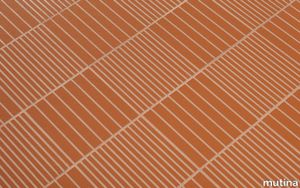
mutina > Floor tile-stone
Fringe – ornamental border made of threads or strips – is the first collection designed by Michael Anastassiades for Mutina. It is a tile divided into a series of parallel segments of two widths, directly engraved onto the surface. The pronounced grout spacing forms a “brick like” design and can be woven into multiple patterns through a simple interplay of a change in orientation. The result is a series of seamless carpets with or without borders which demarcate spaces, perfectly adapting to each environment.
Kosei by Vincent Van Duysen
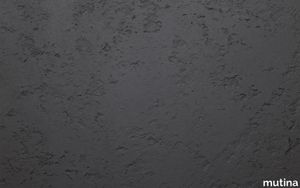
mutina > Floor tile-stone
With Kosei – which means composition in Japanese – Vincent Van Duysen proposes a range of ceramic surfaces developed with pure and tactile materials, inspired by lava rocks such as obsidian and volcanic glasses, which are homogeneous, amorphous and with exceptional hardness. The end result is a timeless design conceived for “grand” architecture, characterised by extreme versatility thanks to the 8 formats and 5 colours that can be matched to create infinite combinations with a progressively decorative taste.
Mater by Patricia Urquiola
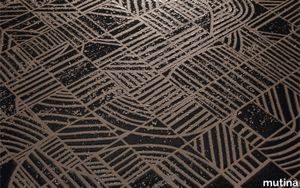
mutina > Floor tile-stone
Mater – name that comes from materia, matter in Italian, which recalls the earth used to realise the neutral bases of the collection – is a project where glaze becomes the true protagonist, being applied with an innovative glazing technique which allowed for the creation of a tactile effect with great visual impact. It is an industrial collection able to convey the same sensations of an artisanal product, suitable for residential and commercial spaces, indoor and outdoor.
Mattonelle Margherita by Nathalie Du Pasquier
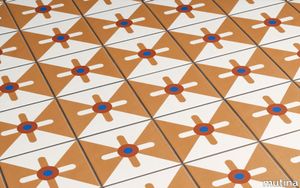
mutina > Floor tile-stone
With Mattonelle Margherita, Mutina has worked with colour, along with the artist Nathalie Du Pasquier, creating a complex project featuring a blend of different aesthetic and formal means of expression. The collection is characterised by a dual concept: on the one hand, a simple, minimalist style and, on the other, a courageous, creative approach. The elements are created in glazed porcelain stoneware, deepening into a careful research about the glazes, in order to identify the most reactive, so as to give a bright, vibrant finish to the satin-effect surface.
Mews by Barber & Osgerby

mutina > Floor tile-stone
Mews, a term referring to the narrow alleys in London's historic centre with their unique and picturesque aesthetic, is inspired by urban landscape, history, and textures of the English capital. These details merge, creating pleasantly vibrant geometric compositions. The collection is the result of a long experimentation on colour, which led to the creation of a palette of nine shades: Chalk, Fog, Pigeon, Lead, Ink, Soot, Green, Light Blue and Pink, each of which is further divided into over 15 different tones, imparting a sense of depth and movement to the surfaces.
Phenomenon by Tokujin Yoshioka

mutina > Floor tile-stone
Phenomenon stems from the desire to incorporate natural phenomena and the laws of nature into a contemporary design project, not simply for reproducing their aspect but to evoke an emotion. The collection reminds of different expressions of natural patterns such as honeycombs, snowflakes, sticks of ice, plant cells, evoking memories of natural sceneries and individual experiences of the natural world. With the new edition of Phenomenon, the range is enriched with 3 new colours – Blu, Rosa and Verde – which join the 4 historical ones – Bianco, Grigio, Fango and Nero –, each of which is offered on all the available elements: Honeycomb A, Honeycomb B, Rock, Air, Wind, Rain A, Rain B e Rain C. The range also includes the new Phenomenon Glossy: the Honeycomb B, Rock and Rain A modules have been chosen to experiment the glossy finish for the first time, featuring the Bianco, Nero, Oro and Argento shades. The extremely small size of the tesserae has made it necessary to set up a new production process that combines industrial and craft approaches with the objective of making the finish stand out as much as possible.
Pico by Ronan & Erwan Bouroullec
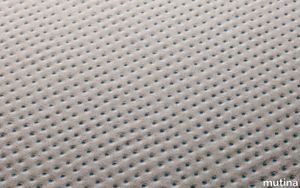
mutina > Floor tile-stone
While developing Pico, we have worked on defining a regular-irregular texture, declined in two surfaces: Down, with sunken dots, and Up, with elevated dots. To add dynamics, we also decided to use colours such as red and blue, applied as little dots in the hollow or as a base. With the new edition of Pico, the colours Blanc and Gris are joined by Argile, realised with the same materials and technology of the already existing variants, and Pico Satin which is obtained by using CONTINUA technology and a satin atomised glaze, that allow to get surface of absolute whiteness, soft and pleasant to the touch.
Primavera by Barber & Osgerby
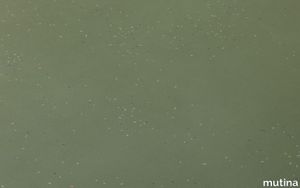
mutina > Floor tile-stone
Primavera represents the contrast between the natural element and the artificial world, translated into ceramic. The designers have reproduced a slab that resembles a natural element with all its irregularities, perceptible to sight and touch, by throwing small coloured ceramic inserts in a completely random way, thus creating a unique and always different texture. Produced in unglazed porcelain stoneware, the tiles are available in sizes 120x240 cm, 120x120 cm and 60x60 cm and consist of five basic colours: Bianco, Grigio, Verde, Blu e Nero. With all its variations, delicately complementary and visually contrasting, the shade rage gives the interiors a modern and refined atmosphere.
Punto by Ronan & Erwan Bouroullec
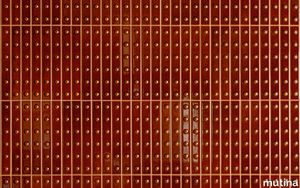
mutina > Floor tile-stone
Developed from the concept that inspired Pico collection, Punto is a three-dimensional decorative element that can be used only on walls. The pattern is characterised by big sunken dots (Down) or elevated dots (Up) and finds its highest expression when used on large surfaces. Depending on how light hits the elements, they create unexpected chiaroscuro effects that enliven interiors. Both the Up and Down options are available in a single size of 4x31.5 cm, provided on meshes of five pieces each. The palette presents five colours in Matt finish (White, Grey, Red, Green and Blue) and five in the Glossy one (Blanc, Gris, Rose, Vert and Brun), which is obtained by applying a transparent, polished and bright glaze.
Puzzle by Barber & Osgerby
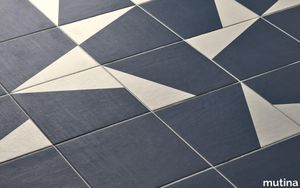
mutina > Floor tile-stone
Puzzle represents the freedom of giving birth to endless random combinations by pairing up graphic patterns with a modern and contemporary aesthetic, thus maximising the possibility of customisation of the interiors. It’s an unprecedented collection that allows to lay the elements (available in the size 25x25 cm) both horizontally and vertically, on floors and walls, following regular and abstract patterns. The colour combinations create refined effects, more or less intense, all along the surfaces, that communicates with the architecture and space elements.
Rombini by Ronan & Erwan Bouroullec
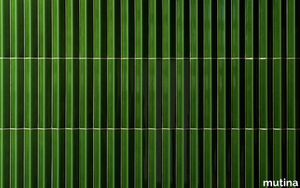
mutina > Floor tile-stone
Rombini is a journey made of ceramic vibration. The collection presents two different modules of great chromatic strength, that can be combined to give the interiors an architectural aesthetic: Losange, which recalls a contemporary mosaic and can be used on both floors and walls, and Triangle, a three-dimensional element specifically developed for walls. On the occasion of the new edition, the already existing variants Triangle Large and Small are joined by the new Extra Small format in the size 2x31.5 cm, as well as by a new Glossy finish in the colours Blanc, Gris, Rose, Vert and Brun, declined on the entire range.
Tape by Raw Edges
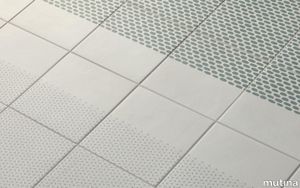
mutina > Floor tile-stone
Tape reproduces the illusion of rolls of colourful patterns that rest on the raw tiles, creating different settings and various atmospheres thanks to the vast number of possible combinations. The design consists of a first slight, almost imperceptible pattern on the base tile that evokes the chalky effect of the surfaces of the carreaux-ciment, and a range of eight patterns – that can be easily combined thanks to the base tiles, one white and one black – all in the five shades of the range: white, blue, green, brown and black. Tape is suitable for both floor and wall tiles, for indoor and outdoor use.
Teknotessere by Mutina Team

mutina > Floor tile-stone
Teknotessere represents modernity and simplicity, in the form of ceramic elements. The collection is made of small 1x1 cm tiles, geometric and essential, in five sober and refined colours: Bianco, Cemento, Nero and Fango. The minimalism of Teknotessere allows for it to be easily complimented with other Mutina collections in the same evironment, thus creating unique and unprecedented atmospheres.
Tex by Raw Edges

mutina > Floor tile-stone
Tex is a re-interpretation of textile textures, entirely ceramic. The shape of the tiles consists of a simplified enlargement of the basic knitted stitch and can be arranged in three main patterns, each of which can be declined in eight different colours: a mix inspired by the design of textiles, which re-creates the feel of the different tones of the yarn. The production of Tex enhances the variety of the textures, the authenticity of colours and the quality of the glaze that, once applied on the surface, gives birth to irregular and more or less saturated light effects.
Tierras by Patricia Urquiola

mutina > Floor tile-stone
Tierras came about from the Mediterranean artisanal tradition and focuses on the concept of sedimentation, in order to create a collection where the elements seems to come from earth, marked by the hand of a man and the time passing by. It’s a re-interpretation of traditional craftsmanship, where different kind of terracotta and clays, chromatically matching with each other, combine and mix, enriching and softening the black base of recycled ceramics on which they deposit.
Time by Barber & Osgerby
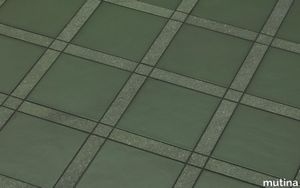
mutina > Floor tile-stone
Time was conceived to commemorate a decade of collaboration between Mutina and Barber and Osgerby. It serves as an exploration of the natural weathering processes, where the recurrent actions of water and wind gradually erode and refine surfaces, shaping landscapes and evolving rugged features into sleek forms.
Bloc by Ronan & Erwan Bouroullec
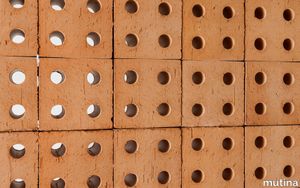
mutina > Floor tile-stone
Bloc is a terracotta brick produced with the artisanship extrusion process. It’s a three-dimensional element conceived to build architectural and decorative structures. It features a Natural version and a palette of four shades – Pearl, Blue, Red and Grey – declined in both Matt and Glossy finishes. The glazed matt modules are obtained by using some paints from Mutina Accents, while the glossed ones came about from the application of a bright transparent ceramic glaze.
Brac by Nathalie Du Pasquier
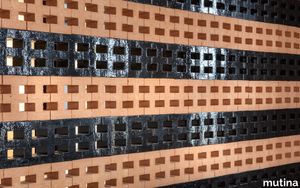
mutina > Floor tile-stone
Brac is a brick exclusively designed by Nathalie Du Pasquier. It is a three-dimensional element in the size of 12.5x22x10 cm, imagined as versatile component for the creation of all sorts of structures and walls, where unexpected interplays of light and shadow come alive. Realised in extruded terracotta, the bricks that characterise the collection are real design elements that can be installed both vertically and horizontally, in residential and public interiors.
Celosia by Patricia Urquiola

mutina > Floor tile-stone
Celosia is a new take on the artisanal production process typical of terracotta with the aim of giving birth to imperfect and tactile elements that come from earth, marked by the hand of man and time passing by. Roof tiles, bricks, hollow bricks and partition walls are undone, unstructured and re-interpreted in a new way, keeping the traditional touch given by the handcrafted production. Aesthetically unique and extremely functional design elements are thus created, in the 20,5x26,5x10 cm nominal size. They allow limitless solutions for indoors and outdoors, in both commercial and residential spaces.
Hives by Konstantin Grcic
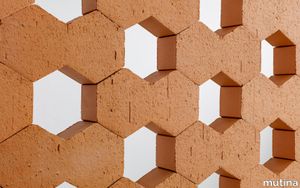
mutina > Floor tile-stone
Hives features one single module: an hexagonal brick handcrafted in extruded terracotta, an ancient material of which it preserves colour, texture and properties. It is a functional 3D element with an organic geometry, available in the size 13x22,5x7 cm.
Jali by Patricia Urquiola
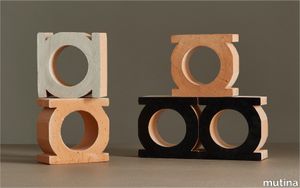
mutina > Floor tile-stone
Jali – form of decoration typical of the Indian architecture, composed by perforated rocks with an ornamental motif, translated as grid – is a simple and functional terracotta brick with delicate shapes, conceived to build structures and decorative furnishings of various kind. The collection features a three-dimensional element in the size 24x12x24 cm, produced by extrusion, available in three colours: Neutro, the natural version, Nero and Bianco, with a glossy finish.
Mistral by Barber & Osgerby
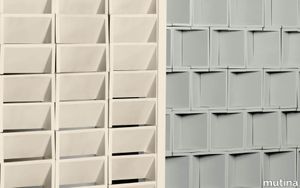
mutina > Floor tile-stone
With Mistral, Mutina continues its research on three-dimensional elements, abandoning what is the classic perception, in favor of a contemporary and innovative project. The collection was born from a reminiscence of the ancient architecture typical of the Italian countryside, from which the designers drew inspiration to design extremely innovative and highly functional elements. Mistral is composed of a single terracotta module handcrafted for casting, geometrically refined and proportioned, available in 12,5x25,5x12,5 cm sizes.
Renga by Vincent Van Duysen

mutina > Floor tile-stone
Renga – a term used in Japanese culture to indicate a traditional form of poetry characterised by the alternation of long and short stanzas that can be literally translated as «chain poetry» – is the three-dimensional element designed by Vincent Van Duysen for Mutina, conceived as a brick with which to create partition walls, but also as a decorative object in its own right.
El Lobo by Patricia Urquiola
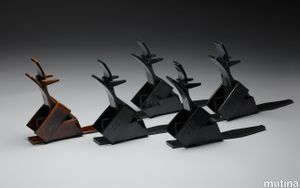
mutina > Accessories
El Lobo is the result of the intuition of Patricia Urquiola: a single continuous line that traces the profile of a wild and free wolf howling at the moon. It’s a strongly symbolic animal, an expression of vitality, instinct and nature, characteristics which the designer has associated with Mutina’s own spirit and creative journey.
Yama by Vincent Van Duysen
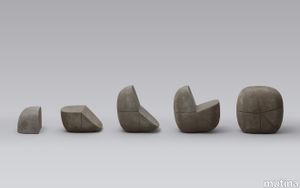
mutina > Accessories
In Japanese language, yama means mountain. This is how Vincent Van Duysen calls the new project forming part of Mutina Editions, an ode to the strength of nature and its transforming force. The architect has taken inspiration from the pebbles which, carried by the current of rivers flowing from the highland peaks to the valley, are shaped into soft, sensual shapes.
Paesaggi by Nathalie Du Pasquier

mutina > Accessories
Paesaggi provides a range of artistic objects designed for interior decoration: three models declined in three colour options with a glossy finish, for a total of 9 unique pieces. The elements are composed of a 10 cm thick base – squared in the size 40x40 cm, rectangular in the size 40x60 cm and rounded with a diameter of 40 cm – on which a composition of geometric shapes come to life. These components present rich hues – black, white, green, red, yellow and pink –, used individually for the variants in solid colour or combined with each other in the polychrome ones.
Rombini Vases by Ronan & Erwan Bouroullec
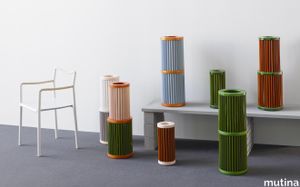
mutina > Accessories
With Rombini Vases, Mutina adds a new, significative collaboration within the world of auteur interiors. The ceramic vases, designed by Ronan and Erwan Bouroullec and produced in collaboration with Bitossi, are made to be paired with the collections of the brand as well as providing new stimuli for interior decoration.
Rivington Tables by Barber & Osgerby
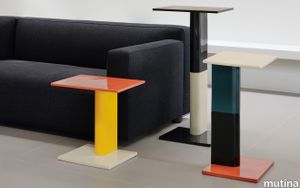
mutina > Accessories
Rivington Tables derives its name from the Rivington Bar & Grill Restaurant in London. Situated in close proximity to Edward Barber and Jay Osgerby’s studio, this establishment quickly became a favourite meeting spot with the Mutina team. The project celebrates not only the infinite expressive potential of ceramics but also a decade of collaboration with the company.
The Cylinder Glass by Laboratorio Avallone
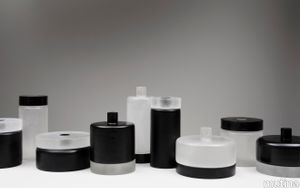
mutina > Accessories
The Cylinder Glass is the first limited edition project by Mutina, that came about from the synergy with Laboratorio Avallone. It is the result of a specific research focused on a new material, glass, and takes shape in the furnaces of Murano.
Recently Viewed Products
A wide range of product from furniture to finishes to meet the desire of all designers.
BLOC MATT PEARL - Terracotta element for partition wall _ Mutina
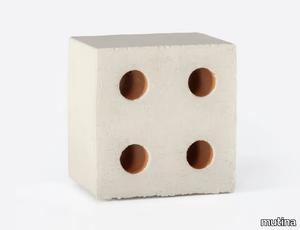
mutina > Screens
Bloc is a meticulously crafted terracotta brick created through the artisanal extrusion process, designed as a three-dimensional element for constructing both architectural and decorative structures. Available in a Natural version and a curated palette of four shades—Pearl, Blue, Red, and Grey—each color is offered in both Matt and Glossy finishes. The Matt finish is achieved using Mutina Accents paints, while the Glossy finish features a luminous transparent ceramic glaze. The distinctive perforations in Bloc can remain open to create dynamic light effects or be filled with Tube, a wooden accessory available in red and blue, adding versatility to its design. A downloadable 3D file of the product is available for detailed visualization and planning. Mutina, an Italian interior design leader founded in 2006, is renowned for its premium ceramic and porcelain tiles, celebrated for their innovative, sustainable designs and modern minimalist aesthetic, making them a top choice for residential and commercial spaces worldwide.
Products From the Same Collection
A wide range of product from furniture to finishes to meet the desire of all designers.
BLOC GLOSSY PEARL - Terracotta element for partition wall _ Mutina
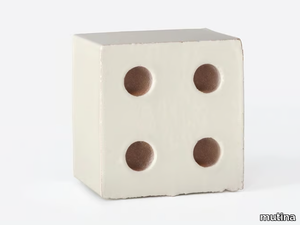
mutina > Screens
Bloc is a meticulously crafted terracotta brick, produced through the artisanal extrusion process, designed as a three-dimensional element for constructing both architectural and decorative structures. Available in a Natural version and a curated palette of four shades—Pearl, Blue, Red, and Grey—each color is offered in both Matt and Glossy finishes. The Matt finish is achieved using specialized paints from Mutina Accents, while the Glossy finish features a vibrant, transparent ceramic glaze. The distinctive holes in Bloc bricks can remain open to create dynamic light effects or be filled with Tube, a wooden accessory available in red and blue, adding versatility to its design. A downloadable 3D file of the product is also available for detailed visualization and planning. Mutina, an esteemed Italian interior design supplier founded in 2006, is renowned for its innovative, high-quality ceramic and porcelain tiles, blending modern aesthetics with sustainability, and catering to both residential and commercial spaces worldwide.
BLOC GLOSSY GREY - Terracotta element for partition wall _ Mutina
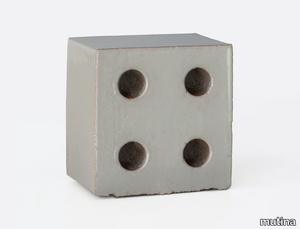
mutina > Screens
Bloc is a meticulously crafted terracotta brick created through the artisanal extrusion process, designed as a versatile three-dimensional element for constructing both architectural and decorative structures. Available in a Natural version and a palette of four elegant shades—Pearl, Blue, Red, and Grey—each color is offered in both Matt and Glossy finishes. The Matt finish is achieved using specialized paints from Mutina Accents, while the Glossy finish features a luminous transparent ceramic glaze. The distinctive holes in Bloc can remain open to create captivating light effects or be filled with Tube, a wooden accessory available in red and blue, adding a playful yet functional touch. A 3D file of the product is also available for download, allowing for precise planning and visualization. Mutina, an Italian interior design leader founded in 2006, is renowned for its innovative, high-quality ceramic and porcelain tiles, blending modern aesthetics with sustainable practices.
BLOC GLOSSY RED - Terracotta element for partition wall _ Mutina
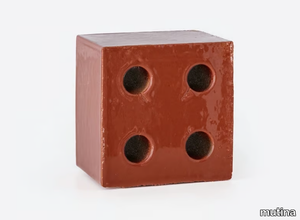
mutina > Screens
Bloc is a versatile terracotta brick crafted through the artisanal extrusion process, designed as a three-dimensional element for constructing both architectural and decorative structures. Available in a Natural version and a curated palette of four shades—Pearl, Blue, Red, and Grey—each color is offered in both Matt and Glossy finishes. The Matt finish is achieved using paints from Mutina Accents, while the Glossy finish features a luminous transparent ceramic glaze. The distinctive holes in Bloc can remain open to create captivating light effects or be filled with Tube, a wooden accessory available in red and blue, adding a playful touch to the design. A downloadable 3D file of the product is also available for further exploration and planning. Mutina, an Italian interior design leader founded in 2006, is renowned for its innovative, high-quality ceramic and porcelain tiles, blending modern aesthetics with sustainable practices.
BLOC GLOSSY BLUE - Terracotta element for partition wall _ Mutina
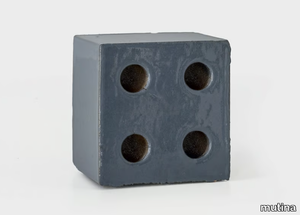
mutina > Screens
Bloc is a meticulously crafted terracotta brick, produced through the artisanal extrusion process, designed as a three-dimensional element for constructing both architectural and decorative structures. Available in a Natural version and a palette of four elegant shades—Pearl, Blue, Red, and Grey—each color is offered in both Matt and Glossy finishes. The Matt finish is achieved using specialized paints from Mutina Accents, while the Glossy finish is created by applying a luminous transparent ceramic glaze. The distinctive holes in Bloc can either remain open to create captivating light effects or be filled with Tube, a wooden accessory available in red and blue, adding versatility to its design. A 3D file of the product is also available for download, allowing for detailed visualization and planning. Mutina, the renowned Italian interior design supplier behind Bloc, is celebrated for its innovative, high-quality ceramic and porcelain tiles, blending modern aesthetics with sustainable practices since its founding in 2006.
BLOC MATT PEARL - Terracotta element for partition wall _ Mutina

mutina > Screens
Bloc is a meticulously crafted terracotta brick created through the artisanal extrusion process, designed as a three-dimensional element for constructing both architectural and decorative structures. Available in a Natural version and a curated palette of four shades—Pearl, Blue, Red, and Grey—each color is offered in both Matt and Glossy finishes. The Matt finish is achieved using Mutina Accents paints, while the Glossy finish features a luminous transparent ceramic glaze. The distinctive perforations in Bloc can remain open to create dynamic light effects or be filled with Tube, a wooden accessory available in red and blue, adding versatility to its design. A downloadable 3D file of the product is available for detailed visualization and planning. Mutina, an Italian interior design leader founded in 2006, is renowned for its premium ceramic and porcelain tiles, celebrated for their innovative, sustainable designs and modern minimalist aesthetic, making them a top choice for residential and commercial spaces worldwide.
BLOC MATT GREY - Terracotta element for partition wall _ Mutina
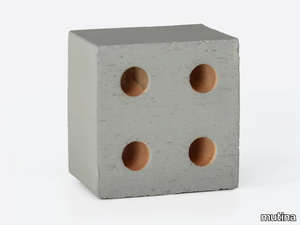
mutina > Screens
Bloc is a meticulously crafted terracotta brick created through the artisanal extrusion process, designed as a three-dimensional element for constructing both architectural and decorative structures. Available in a Natural version and a palette of four elegant shades—Pearl, Blue, Red, and Grey—each color is offered in both Matt and Glossy finishes. The Matt finish is achieved using specialized paints from Mutina Accents, while the Glossy finish features a luminous transparent ceramic glaze. The distinctive holes in Bloc can remain open to create dynamic light effects or be filled with Tube, a wooden accessory available in red and blue, adding versatility to its design. A 3D file of the product is also available for download, allowing for detailed visualization and planning. Mutina, an Italian interior design leader founded in 2006, is renowned for its innovative, high-quality ceramic and porcelain tiles, blending modern aesthetics with sustainable practices, and has a global presence with branches in the US, France, Spain, and the UK.
BLOC MATT RED - Terracotta element for partition wall _ Mutina
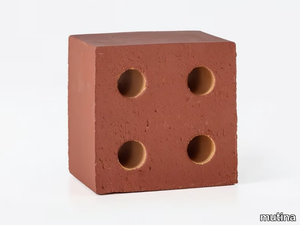
mutina > Screens
Bloc is a meticulously crafted terracotta brick created through the artisanal extrusion process, designed as a three-dimensional element for constructing both architectural and decorative structures. Available in a Natural version and a palette of four elegant shades—Pearl, Blue, Red, and Grey—each color is offered in both Matt and Glossy finishes. The Matt finish is achieved using specialized paints from Mutina Accents, while the Glossy finish features a vibrant transparent ceramic glaze. The distinctive holes in Bloc bricks can remain open to create dynamic light effects or be filled with Tube, a wooden accessory available in red and blue, adding versatility to its design. A downloadable 3D file of the product is also available for detailed visualization and planning. Mutina, an Italian interior design leader founded in 2006, is renowned for its premium ceramic and porcelain tiles, blending modern aesthetics with sustainable practices, and has a global presence with branches in the US, France, Spain, and the UK.
BLOC MATT BLUE - Terracotta element for partition wall _ Mutina
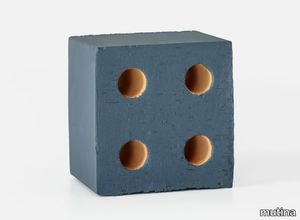
mutina > Screens
Bloc is a meticulously crafted terracotta brick created through the artisanal extrusion process, designed as a three-dimensional element for constructing both architectural and decorative structures. Available in a Natural version and a palette of four elegant shades—Pearl, Blue, Red, and Grey—each color is offered in both Matt and Glossy finishes. The Matt finish is achieved using specialized paints from Mutina Accents, while the Glossy finish features a vibrant transparent ceramic glaze. The distinctive holes in Bloc can remain open to create dynamic light effects or be filled with Tube, a wooden accessory available in red and blue, adding versatility to its design. A downloadable 3D file of the product is also available for detailed visualization and planning. Mutina, an Italian interior design leader founded in 2006, is renowned for its innovative, high-quality ceramic and porcelain tiles, blending modern minimalism with sustainability, and catering to both residential and commercial spaces worldwide.
BLOC NATURAL - Terracotta element for partition wall _ Mutina
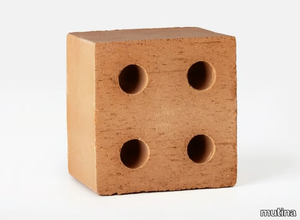
mutina > Screens
Bloc is a meticulously crafted terracotta brick created through the artisanal extrusion process, designed as a three-dimensional element for constructing both architectural and decorative structures. Available in a Natural version and a palette of four elegant shades—Pearl, Blue, Red, and Grey—each color is offered in both Matt and Glossy finishes. The Matt finish is achieved using paints from Mutina Accents, while the Glossy finish features a vibrant transparent ceramic glaze. The distinctive holes in Bloc can remain open to create dynamic light effects or be filled with Tube, a wooden accessory available in red and blue, adding versatility to its design. A downloadable 3D file of the product is also available for detailed visualization and planning. Mutina, an Italian interior design leader founded in 2006, is renowned for its innovative, high-quality ceramic and porcelain tiles, blending modern aesthetics with sustainable practices, and has a global presence with branches in the US, France, Spain, and the UK.
Recommended Products
A wide range of product from furniture to finishes to meet the desire of all designers.
DUO - Fabric Screen _ Poltrona Frau
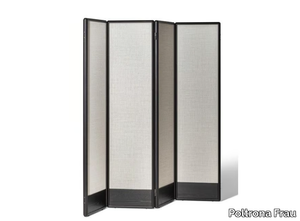
Poltrona Frau > Screens
The **DUO screen** is a versatile and elegant room divider available in configurations of 3, 4, or 5 modules, each standing 180 cm tall. It features a **solid ash wood frame** in various finishes and a hollow-core panel, offering a sleek yet functional design. The screen is **fully customizable**, allowing you to choose between **wallpaper**, **fabric**, or **leather** finishes for each module, with the option to have different finishes on either side. Adjustable height levelers on the feet ensure stability on uneven surfaces, while the **bronzed brass metal details** add a touch of sophistication. Part of the **DUO Collection**, this product is a collaboration between **Poltrona Frau** and **Ceccotti Collezioni**, embodying a shared design vision inspired by the Italian-style **Dolce Vita**. Designed by **Roberto Lazzeroni**, the collection blends retro charm with modern innovation, offering luxury upholstered furniture and exquisite wooden pieces for the living room. A **3D file of the product** is available for download, allowing for seamless integration into design plans. **Poltrona Frau**, a renowned Italian luxury furniture brand founded in 1912, is celebrated for its high-end leather furniture, lighting, and home decor, combining timeless craftsmanship with modern elegance.
PLOT - Leather room divider _ Poltrona Frau
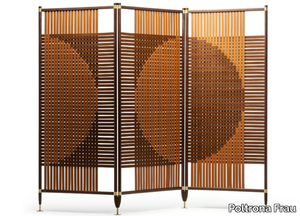
Poltrona Frau > Screens
The Plot modular room dividers, designed by GamFratesi and produced by the renowned Italian luxury furniture brand Poltrona Frau, offer a blend of elegance, functionality, and privacy, allowing you to effortlessly redesign any space with their foldable and customizable design. These dividers feature a sleek aluminium structure with a moka ash finish, complemented by matt brass metal joints and bronze-finished feet, while their most striking detail lies in the geometric patterns created using intricately plaited Pelle Frau® ColorSphere® leather bands, available in a variety of pre-set color combinations. Available in two, three, or four modules, the Plot dividers are perfect for modern, contemporary, or minimalist interiors, adding a touch of sophistication to any setting. Additionally, a downloadable 3D file of the product is available for those looking to visualize or integrate it into their design plans. Poltrona Frau, established in 1912 and headquartered in Tolentino, Italy, is celebrated for its timeless, high-end craftsmanship and luxurious materials, making it a global leader in premium furniture and interior design.
TRUST - Freestanding oak office screen _ Poltrona Frau
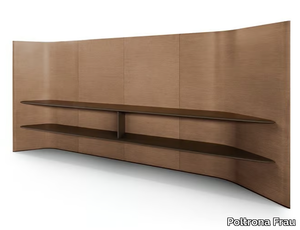
Poltrona Frau > Screens
The Trust collection by Poltrona Frau, designed by Alberto Lievore, Jeannette Altherr, and Dennis Park, is a free-standing oak office screen system that redefines modern workspaces. This innovative collection, born from extensive research into the evolving nature of contemporary work, features desks, self-supporting walls, and storage units that can be freely combined to adapt to diverse working styles. With fluid, organic forms and a focus on lightweight yet durable materials like leather, saddle-leather, and wood, Trust creates versatile environments that balance individual focus with collaborative spaces. A 3D file of the product is available for download, allowing for seamless integration into design plans. Poltrona Frau, a renowned Italian luxury furniture brand established in 1912, is celebrated for its timeless craftsmanship and premium materials, offering a global clientele sophisticated solutions for both residential and commercial interiors.
EGGBOARD WALL/CEILING - Fabric Acoustic wall panel with Integrated Lighting _ Artemide
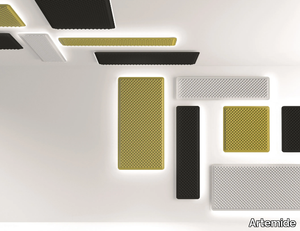
Artemide > Screens
The **Eggboard Wall/Ceiling** is a sophisticated fabric acoustic wall panel with integrated lighting, designed to enhance both sound absorption and illumination in any space. Available in multiple configurations (Article numbers: AZ90200, AZ90400, AZ90500, AZ90600), it features LED lighting with options for 32W or 16W power, emitting a luminous flux of 3000lm or 1300lm, and offers color temperatures of 3000K or 4000K with a CRI of 80. The panel is dimmable via Push, 1-10V, or Dali controls and comes in lengths of 160cm or 80cm. Part of the Eggboard collection, it excels in reducing sound reverberation, particularly for human voice frequencies, making it ideal for offices, meeting rooms, or residential spaces. The design incorporates grazing light for wall or ceiling installation, creating a harmonious blend of acoustic performance and lighting comfort. Additionally, a 3D file of the product is available for download, allowing for seamless integration into design plans. **Supplier Description:** Artemide, a globally acclaimed Italian design company founded in 1960, is renowned for its innovative lighting solutions and commitment to blending functionality with aesthetic excellence.
EGGBOARD BAFFLE - Fabric acoustic baffles with Integrated Lighting _ Artemide

Artemide > Screens
The **Eggboard** is a versatile acoustic baffle system with integrated lighting, designed to enhance both sound quality and illumination in interior spaces. Available in dimensions of 1600x400mm or 800x400mm, it features direct or direct+indirect light emission, with options for sharp or no light, and comes in colors like Cream White, Grey, and Green. The system offers a range of wattages (11W, 21W, 29W, 53W), color temperatures (3000K, 4000K), and lumen outputs (667lm to 4988lm), ensuring flexibility for various lighting needs. The Eggboard collection focuses on acoustic absorption, effectively reducing sound reverberation, particularly for human voice frequencies, making it ideal for offices, meeting rooms, and other spaces requiring sound control. Its vertical suspension and panel designs, combined with grazing light, create a harmonious lightscape while maintaining acoustic efficiency. The patented Eggboard Matrix optical units allow for customizable lighting performances, blending indirect diffused light with direct controlled light. Additionally, a 3D file of the product is available for download, enabling seamless integration into design plans. **Artemide**, the supplier, is a globally recognized Italian design company founded in 1960, celebrated for its innovative lighting solutions and commitment to blending aesthetics with functionality.
HIVES - Terracotta element for partition walls _ Mutina
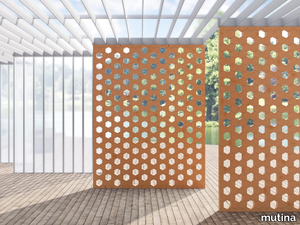
mutina > Screens
Hives is a versatile design element featuring a single hexagonal brick crafted from extruded terracotta, a timeless material that retains its natural color, texture, and properties. Inspired by the efficiency and expandability of beehives, Konstantin Grcic created this functional 3D module with organic geometry, measuring 13x22.5x7 cm. Suitable for both indoor and outdoor use (when under cover), Hives can be arranged in various orientations—upright for partition walls or flat for curved walls—allowing for endless creative possibilities, such as constructing architectural elements, furniture, or decorative patterns that play with solids and voids. A 3D file of the product is available for download, enabling further customization and planning. Manufactured by Mutina, a renowned Italian design brand founded in 2006, Hives reflects the company’s dedication to innovation, sustainability, and high-quality craftsmanship, making it a premium choice for modern interior and architectural solutions.
BRAC - Terracotta element for partition wall _ Mutina
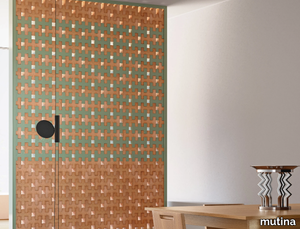
mutina > Screens
BRAC is a versatile 3D brick designed by renowned artist Nathalie Du Pasquier exclusively for Mutina, serving as a dynamic element for creating unique structures and walls. This design is the natural evolution of Du Pasquier's BRIC project, originally developed for the MUT - Mutina For Art exhibition space. Inspired by the brick's potential, the artist reimagined it as a modular component that can be arranged vertically or horizontally, creating captivating interplays of light and shadow in any setting. The BRAC collection features five distinct colors: argilla (natural matte), bianco, salvia, marrone, and nero (glossy finish), each embodying Du Pasquier's signature blend of playful spirituality and her ability to harmonize light, color, and sound within a space. A downloadable 3D file of the product is available for further exploration and design integration. Mutina, an Italian interior design leader founded in 2006, is celebrated for its innovative, high-quality ceramic and porcelain tiles, offering a modern, minimalist aesthetic with a strong commitment to sustainability.
L'ADDIO - Tapestry _ Moroso
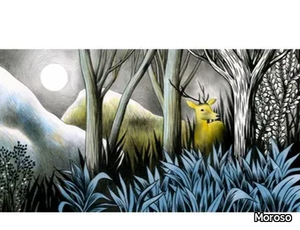
Moroso > Screens
The Tapestry collection is a harmonious fusion of Moroso's creative vision, Gruppo Limonta's exquisite fabrics, and Kvadrat's cutting-edge sound-absorbing technology. This innovative project reimagines traditional tapestry techniques, blending diverse artistic expressions and chromatic sensibilities into a tactile and visually captivating experience. The collection features designs by renowned creators such as Tord Boontje, Front, Patricia Urquiola, Gabriella Giandelli, and Alessandro Paderni, each weaving their unique narratives into the fabric. Crafted using Jacquard looms and supported by durable plastic panels, the tapestries are framed in sleek black lacquered aluminium, with the rear covered in black polyester textile. Delivered in wooden crates with mounting tools included, the collection also offers a downloadable 3D file for design planning. Moroso, the esteemed Italian design house behind this collaboration, is celebrated for its premium, contemporary furniture and accessories, crafted in collaboration with world-renowned designers and architects, and is headquartered in Udine, Italy, with a global presence in major design hubs.
L'ASCOLTO - Tapestry _ Moroso
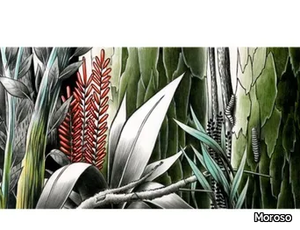
Moroso > Screens
The Tapestry collection is a harmonious fusion of Moroso's creative vision, Gruppo Limonta's exquisite fabrics, and Kvadrat's cutting-edge sound-absorbing panel technology. This innovative project reimagines traditional tapestry techniques, blending diverse artistic expressions and experimental approaches to elevate the tactile and visual experience. The collection transforms tapestry into both a production method and a profound creative act, where varying artistic styles and color palettes converge on a surface that emphasizes texture as a key element of aesthetic engagement. The designs challenge perception, provoke thought, and play with visual intrigue, offering a narrative that reconnects the observer with the material world in an era dominated by digital imagery. Created by renowned designers Tord Boontje, Front, Patricia Urquiola, comic artist Gabriella Giandelli, and photographer Alessandro Paderni, each piece is crafted using Jacquard loom techniques, supported by durable plastic panels, and framed in sleek black lacquered aluminum. The rear is finished with black polyester textile, and the product arrives in protective wooden crates, complete with mounting tools (screws and dowels). A 3D file of the product is also available for download, allowing for seamless integration into design projects. Moroso, the esteemed Italian interior design company behind this collection, has been a pioneer in high-end furniture since its founding in 1952, renowned for its contemporary designs, vibrant aesthetics, and collaborations with world-class designers. Headquartered in Udine, Italy, with a global presence in cities like London, New York, and Tokyo, Moroso continues to redefine luxury and innovation in the design world.
AVA - Ash and Vienna straw screen _ DE PADOVA
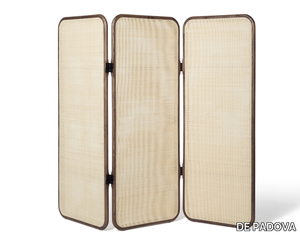
DE PADOVA > Screens
This collection embodies a pure and minimalist aesthetic, seamlessly blending Scandinavian and Brazilian design traditions with a contemporary touch. Featuring timeless, versatile pieces designed to complement various spaces, the collection is distinguished by meticulous attention to detail, the elegance of solid timber craftsmanship, and a focus on comfort and ergonomics. The integration of Vienna straw elements creates an illusion of lightness and transparency, enhancing the design without sacrificing comfort. A 3D file of the product is available for download, allowing for a closer look at its intricate details. DE PADOVA, the renowned Italian interior design company behind this collection, has been a leader in the industry for over 60 years, celebrated for its modern, minimalist furniture and accessories that cater to both residential and commercial spaces.
ANTIBES - Partition system / walk-in closet _ Boffi
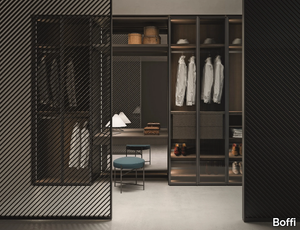
Boffi > Screens
This wardrobe features single-side panels with a structured and finished design, available in a variety of finishes, materials, and configurations, all characterized by a minimalist aesthetic and formal coherence. Door options include hinged versions (Regular with melamine, lacquer, or wood veneer finishes, or Frame+ with anodized extruded aluminum profiles and glass or leather finishes), sliding doors (Regular in melamine, lacquer, or wood veneer), and coplanar sliding doors (Regular in melamine or veneered wood). The interior is highly customizable, offering drawer units, open-faced units, pull-out trouser holders, hanging rods in bronzed aluminum, shirt drawers with matt black metal sides, and pull-out trays with bronzed aluminum frames and Extralight frosted ribbed glass. Shoe shelves come with bronzed aluminum frames, built-in LED lighting, and Extralight frosted ribbed glass, or alternatively in melamine with bronzed aluminum profiles (without lighting). Additional features include multifunctional drawer accessories in black-dyed ash wood and dove-grey velvety microfibre, non-slip mats made of non-toxic material, and 2022 updates such as the Handframe door with integrated full-height handles, ADL glass panels, a Vanity module, leather-upholstered removable trays, and new leather-covered compartments for accessories. Back panels can be framed in anodized extruded aluminum, doubling as low-voltage conductors for lighting, and are available in mirror, fabric, microfibre, leather, or glass finishes. Mixed compositions and back-illuminated panels are also possible. A 3D file of the product is available for download. The supplier, Boffi, is a prestigious Italian design company founded in 1934, renowned for its high-end furniture, kitchens, and bathrooms, blending timeless craftsmanship with innovative, minimalist designs for both residential and commercial spaces.
ABANICO - Fabric Screen _ Roche Bobois
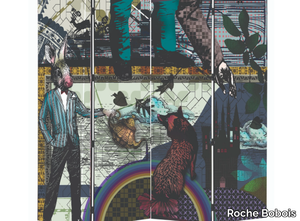
Roche Bobois > Screens
The **ABANICO** is a double-sided screen featuring four foldable panels, each adorned with a selection of beautifully printed patterns inspired by iconic cities such as "London," "Istanbul," and "Paris," complemented by sleek black chrome-plated hardware. Designed by Marcel Wanders for Roche Bobois as part of the **Globe Trotter Collection**, this piece draws inspiration from the adventurous spirit of explorers who traversed the globe, blending historical references with imaginative journeys to create a romantic and poetic narrative. The collection is a celebration of openness, freedom, and creativity, highlighted by a whimsical fresco that weaves together familiar characters from childhood stories, connecting different worlds into a cohesive and enchanting design. A 3D file of the product is available for download, allowing for a detailed preview of its intricate design. Roche Bobois, a renowned French luxury furniture and home decor brand established in 1960, is celebrated for its innovative, high-end designs and collaborations with world-class designers, offering premium collections that redefine modern living spaces with elegance and sophistication.
UPHOLSTERY
A wide range of Upholstery and materials provided by our suppliers to satisfy your needs.
AI services
Fringe Chatbot | Image Finder | Fringe Dall-e | Area Analyzer


